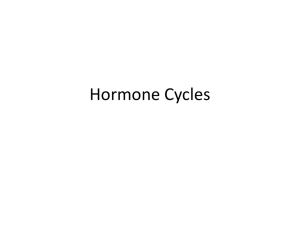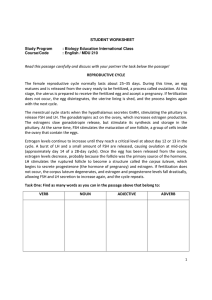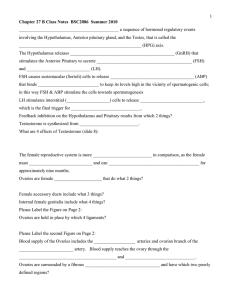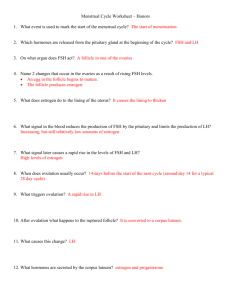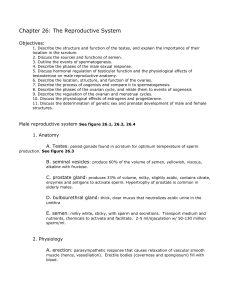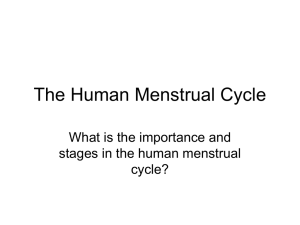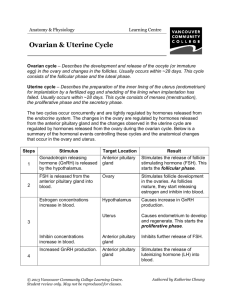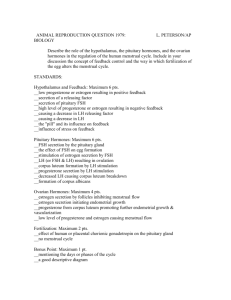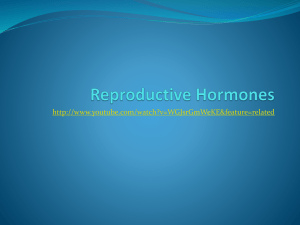Hormonal Regulation of the Reproductive System
advertisement
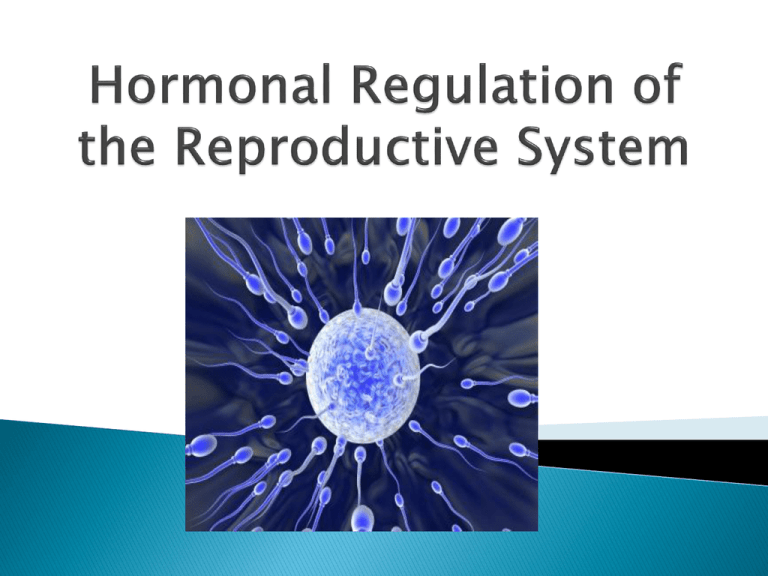
1. Primary sex characteristics (gonads and sperm) are produced while the fetus is still in utero (testes descend into scrotum at third month of development). 2. Secondary sex characteristics (body/facial hair, growth of larynx, muscle strengthening) occur at puberty due to hormonal changes. 1. Hypothalamus • Releases gonadotropic releasing hormone (GnRH) • First released at puberty. • GnRH causes the Pituitary to release: 2. Pituitary • Follicle Stimulating Hormone (FSH) – Stimulates sperm production in seminiferous tubules. • Lutenizing Hormone (LH) – promotes testosterone production (which then promotes sperm production). Interstitial Cells • Interstitial cells in testes produce testosterone when stimulated by LH. • Testosterone stimulates spermatogenesis and development of secondary sex characteristics. • Testosterone deactivates the hypothalamus, inhibiting the production of LH by the pituitary. • Sertoli cells inhibit the hypothalamus from secreting GnRH and the pituitary from secreting FSH. Castratis – Male sopranos popular in 17 and 18 Centuries Prostate cancer is one of the most common cancers in males. (In Canada, 81 Canadian men die from prostate cancer every week). It is detected via blood tests for PSA or through the digital rectal exam. Men over the age of 50 should be examined yearly. Begins when GnRH levels increase Recognized with first episode of menstrual bleeding About 28 days long Phases ◦ ◦ ◦ ◦ Flow phase Follicular phase Ovulation event Leuteal phase Amenorrhea: Absence of a menstrual cycle Menopause: Cessation of menstrual cycles primary oocyte ◦ becomes ovum for fertilization granulose or follicle cells ◦ provide nourishment ovaries undergo continual decline after onset of puberty 500+ follicles start to develop during every cycle, but only a single follicle becomes dominant & reaches maturity. Hypothalamus ◦ gonadotropin-releasing hormone (GnRH) targets pituitary. Pituitary ◦ FSH starts egg maturation. ◦ LH triggers ovulation, and formation of corpus luteum. Ovary ◦ Granulose cells Estrogen promotes thickening of endometrium. ◦ Corpus luteum estrogen and progesterone maintains lining. Flow Follicular Ovulation (event) Luteal shedding of endometrial lining development of follicles within ovary estrogen triggers thickening of endometrium Oocyte (egg) bursts from ovary follicle cells become corpus luteum corpus luteum secretes estrogen and progesterone maintains lining, inhibits ovulation Day 1 – 5 NO HORMONES Day 6 – 13 High FSH, then estrogen, ends with LH spike. Day 14 Highest LH Point Day 15 – 28 High progesterone and estrogen Tubal Ligation fallopian tubes are cut, burned, or blocked with rings, bands or clips. now under local anaesthesia.
